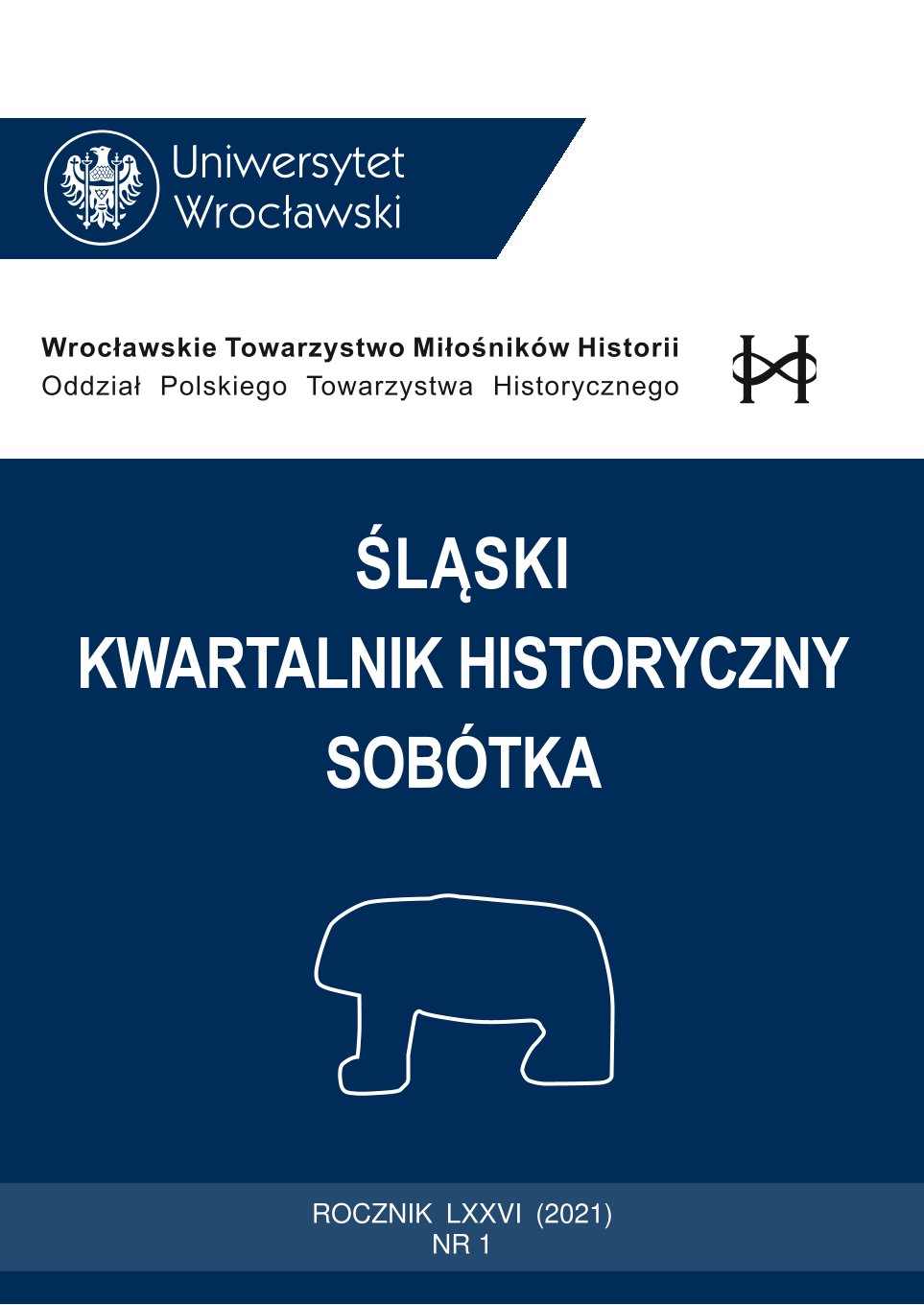Doba luksemburska (1310–1437) i jej habsburski epilog (1438–1457) w Koronie Czeskiej ze śląskiej perspektywy.
Kilka uogólnień z okazji 666. rocznicy cesarskiej koronacji Karola IV w Rzymie
The Luxembourg period (1310–1437) and its Habsburg epilogue (1438–1457) in the Bohemian Crown from the Silesian perspective. Few generalization on the 666th anniversary of imperial coronation of Charles IV in Rome
Author(s): Bogusław CzechowiczSubject(s): History, Middle Ages
Published by: Wydawnictwo Uniwersytetu Wrocławskiego
Keywords: Crown of the Kingdom of Bohemia; Silesia; Polish-Czech relations; John of Luxembourg; Charles IV; Wenceslaus IV; Sigismund of Luxembourg; Albrecht of Habsburg; Ladislaus the Posthumous
Summary/Abstract: The present paper is a synthetic review of the history of the Bohemian realm in the years 1310–1457, i.e., in the Luxembourg period (until 1437) and in the first Habsburg period (1438–1457). It is a perspective contrary to the dominative Bohemian-centered one, which most often led not only to elimination of the Silesian part of history of the Kingdom of Bohemia, but also rendered the actions of the rulers of this country incomprehensible to Czech historians, whereas the creation of the Crown of the Kingdom of Bohemia in 1348 seems to be a reaction to the impossibility of legally incorporating the Polish lands – being a part of the Kingdom of Poland – into the Bohemian realm. The legality of coming into inheritance from the Piast dynasty was strongly accentuated by Charles IV, which created the basis for legal and political dualism of the Bohemian monarchy, with Prague and Bohemia on the one hand, to which the elective nature of the monarchy was ascribed, and Wroclaw with Silesia (but also Moravia) on the other, which retained the hereditary principle of succession to the throne. In the 1350s, Charles IV, relying on this hereditariness, secured the rights of his brother John Henry of Luxembourg and sons of the above to become his successors in case of his heirless passing. The birth of Wenceslaus IV in 1361 simplified this issue; moreover – as a son of a princess from the Piast dynasty (Anna of Świdnica) he strengthened the rights of the Crown of Bohemia to other Silesian duchies (Duchy of Świdnica, Duchy of Jawor). However, such mechanism, suggested (so to speak) by Charles IV, was implemented by Sigismund, who – unwanted in Bohemia – initiated his rule over this country in Wroclaw in 1420. Later liege homages paid by Silesian Estates to Albrecht of Habsburg (1438) and Ladislaus the Posthumous (1456) emphasized their hereditary rights to the throne of Bohemia, simultaneously playing down the role of elections performed in Prague by the Czech Estates (such election was not necessary in the case of Ladislaus the Posthumous because the son succeeded the father). This divergence (or duality) of the way of appointing the king of Bohemia, stretched, so to speak, in the political sphere between Prague and Wroclaw, will become the cause of fundamental problems brought by the illegal (from Wroclaw perspective) election of George of Podebrady in 1458. In Wroclaw, there were no legal grounds to recognize him as a hereditary monarch; moreover, the delegates from Silesia and other countries of the Crown of Bohemia were not invited to the Prague election. It happened again in 1526, once more leading to debates about the rinciples of the Bohemian statehood (i.e., Kingdom of Bohemia).
Journal: Śląski Kwartalnik Historyczny Sobótka
- Issue Year: 76/2021
- Issue No: 1
- Page Range: 5-24
- Page Count: 20
- Language: Polish

